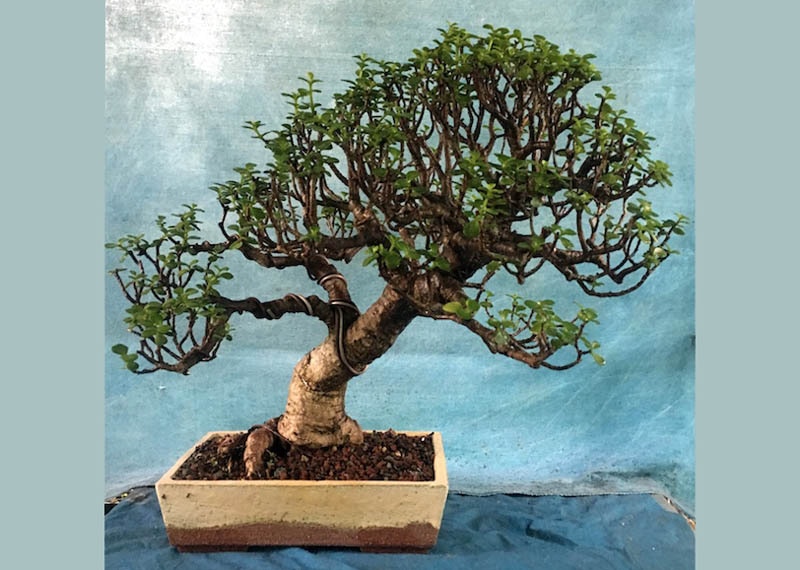Bonsai, a horticultural art with origins in ancient China, remains a cherished pastime and art form. It involves the skill of growing, shaping, and maintaining trees to represent both nature and creativity. Identify tree species that are most suitable for your climate to fully embrace this miniature art form that reflects nature’s beauty. Below are some bonsai models you should refer to:
Ficus (Ficus spp.)
Some trees, such as the ficus, thrive indoors. White recommends Ficus microcarpa, also known as the Chinese Banyan fig, as a great choice for beginners. It prefers temperatures above 68°F and requires high humidity. The ‘Ginseng’ variety of F. microcarpa is commonly used in bonsai, while F. retusa is another popular choice due to its striking trunk. In USDA Zones 10 and 11, ficus bonsai can remain outdoors most of the year.
Ficus trees adapt well to container living, a key aspect of bonsai that restricts their growth. They are also forgiving of occasional lapses in care, such as inconsistent watering. Just ensure your bonsai ficus is placed in a sunny spot.
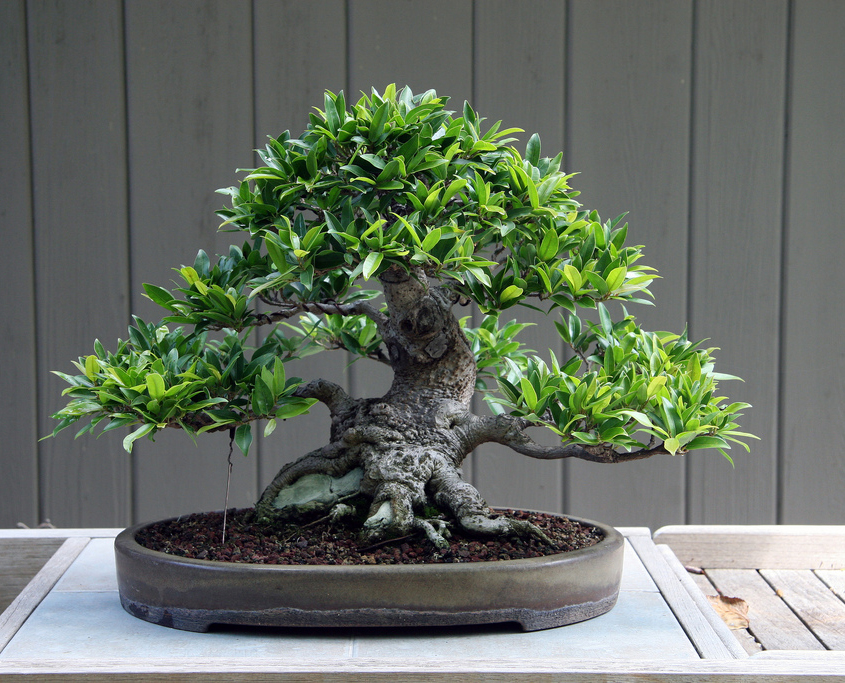
Japanese Maple (Acer palmatum)
Loved for its delicate, color-changing leaves, the Japanese maple makes a stunning bonsai. Outdoors, it grows best in USDA Zones 5 to 8, with the leaves staying green in hotter climates. Because its root system can be confined, it’s ideal for bonsai cultivation. Smaller species or dwarf varieties like the Kiyohime maple (Zones 6 to 9) work particularly well. The Crimson Queen variety showcases fern-like leaves that turn a brilliant orange-red in autumn.
While these trees enjoy sunlight, too much exposure—especially in temperatures above 85°F—can damage the foliage. Water your Japanese maple bonsai daily during its summer growing period.
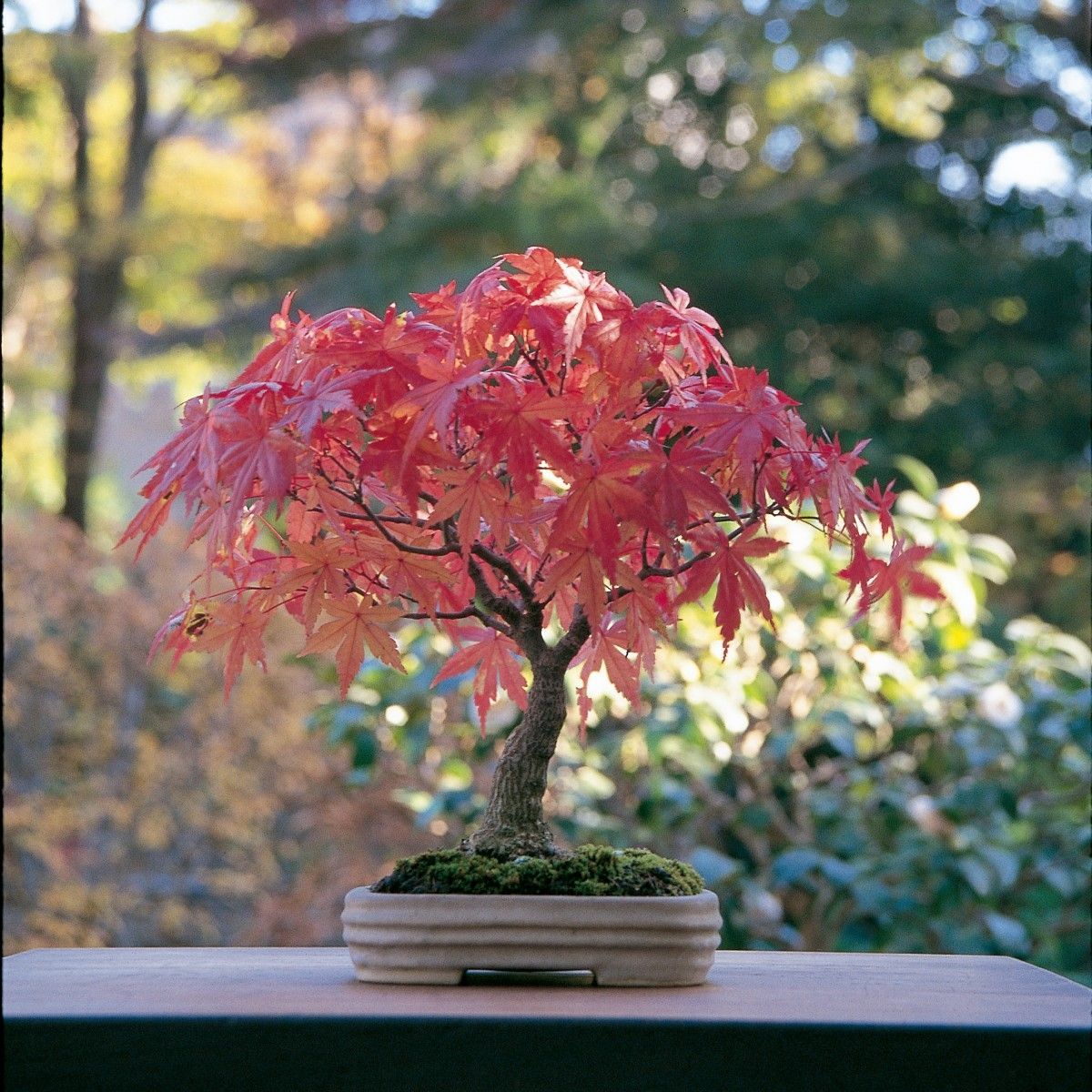
Chinese Elm (Ulmus parvifolia)
This slow-growing species is another of White’s top recommendations for beginners. The Chinese elm is resilient, responds well to pruning, and can tolerate occasional neglect in terms of watering or moisture levels. It can be grown outdoors in most climates and withstands light frost, although it’s best kept in a cool room during winter. Chinese elms thrive in USDA Zones 5 to 10.
Position your Chinese elm in a location with bright morning light that transitions to shade in the afternoon. Water it when the top of the soil feels dry. While generally resistant to pests, spider mites can sometimes pose a problem, but they can be managed with neem oil. Although the Chinese elm is the most popular variety for bonsai, the Siberian elm (U. pumila) also offers larger leaves and unique bark textures.

Juniper (Juniperus spp.)
Junipers, with their needle-like foliage, create a striking visual as bonsai. However, these trees are not suited to indoor environments and should be kept outdoors whenever possible. Fortunately, junipers can handle colder climates, thriving in USDA Zones 4 to 9. White and other experts recommend juniper as an excellent outdoor bonsai for beginners, requiring at least four hours of sunlight per day.
White highlights the Chinese garden juniper (J. procumbens ‘Nana’) as a top choice for novices. This dwarf conifer develops a dense canopy over its twisting branches and is relatively resistant to pests, although it can be susceptible to spider mites and webworms. Care should be taken when pruning, as excessive trimming can cause browning, but the tree will generally recover.
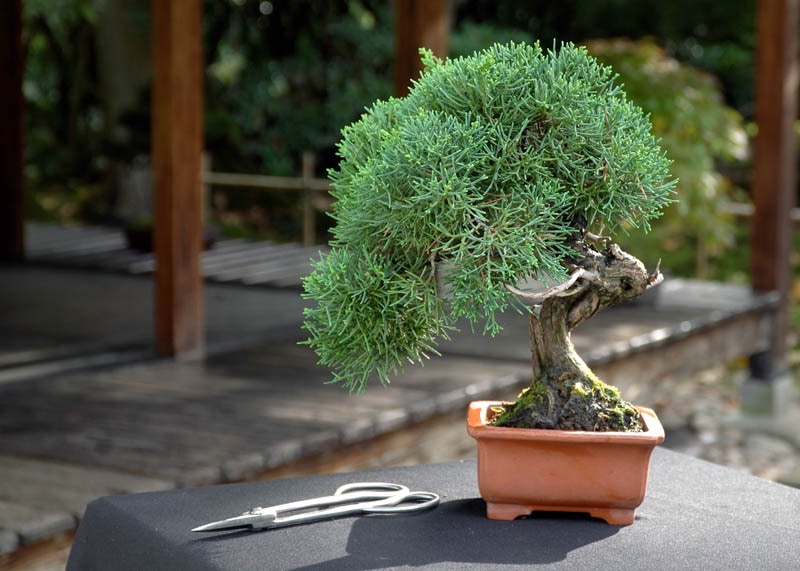
Brazilian Rain Tree
One of White’s personal favorites, this tropical species offers a bit more of a challenge, yet many beginners have had success with it. With its twisting branches and gray-tinged wood, the Brazilian rain tree is visually striking. Native to Brazil, it thrives in bright light, making it suitable for indoor cultivation as long as it receives ample sunlight, ideally near a south-facing window or under grow lights.
If kept outdoors, ensure the tree is brought inside when temperatures drop near 45°F, especially for those in USDA Zones 9 to 11. While the tree has small thorns, this is balanced by its fragrant, fluffy white flowers, which can either fill your indoor space with a sweet scent or attract butterflies outdoors.
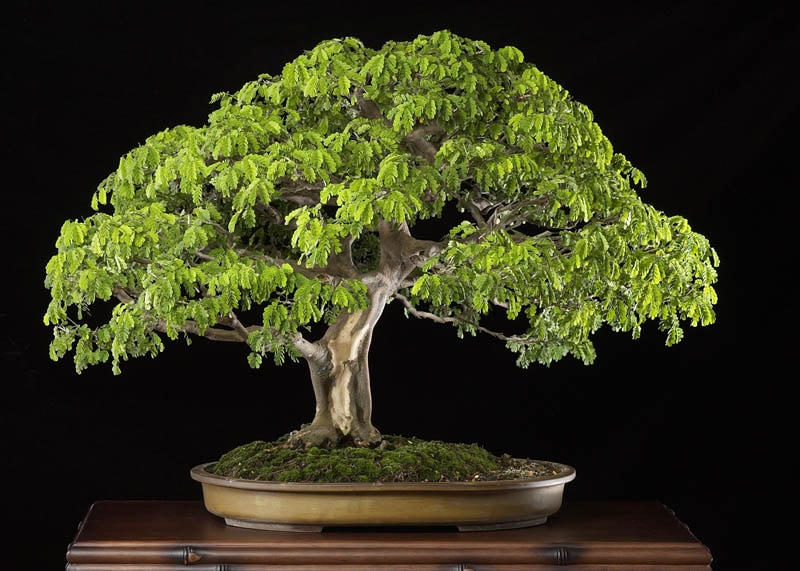
Spruce (Picea spp.)
Although more challenging as bonsai, spruce trees are large evergreen conifers with whorled branches that respond well to wiring. These trees have compact foliage, making them suitable for bonsai. Good species for bonsai include Ezo spruce (P. jezoensis), Norway spruce (P. abies), and Colorado blue spruce (P. pungens). Native to North America, these trees are long-lived, with medium drought tolerance, silvery-blue foliage, and strong cold resistance.
Colorado blue spruce, in particular, is highly cold hardy (USDA Zones 2 to 7). However, take extra precautions during winter to prevent the bonsai’s roots from freezing. For better results, look for dwarf varieties like P. pungens ‘Baby Blue’. Spruce bonsai requires full sunlight during the growing season and partial shade when kept outdoors in a pot. Water frequently but avoid keeping the soil constantly wet.
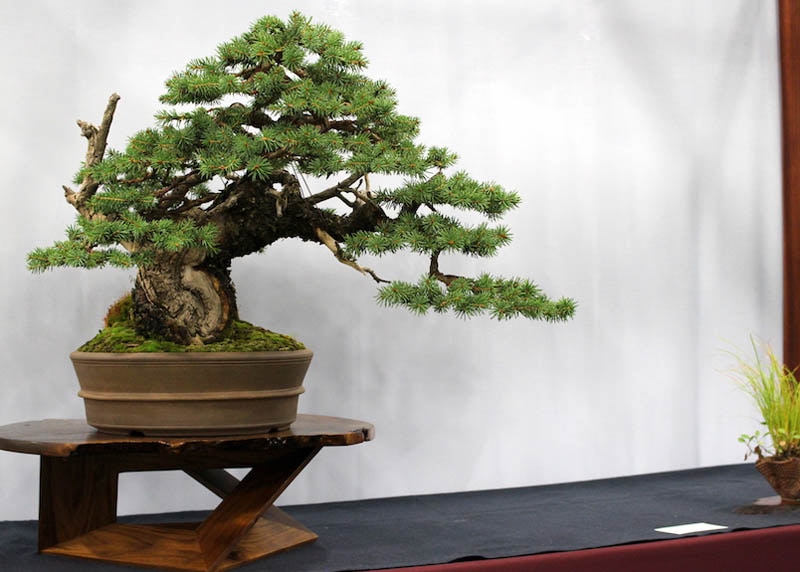
Cotoneaster (Cotoneaster spp.)
Cotoneasters are typically low-growing evergreen shrubs that respond well to pruning, which makes them ideal for bonsai. Their small, glossy green leaves add to their aesthetic appeal. Native to Asia, Europe, and Africa, cotoneasters produce small apple-shaped fruits following clusters of tiny white flowers. C. frigidus grows more like a tree, while C. microphyllus is another excellent option for bonsai.
When growing cotoneasters, aim for a sunny outdoor location and provide frost protection for potted plants. Cold hardy in Zones 4 to 8, cotoneasters are also drought-tolerant, as long as dry periods are short. Their flexible branches make them easy to shape with wires, adding to their bonsai versatility.

Snow Rose (Serissa japonica or S. foetida)
Also known as Japanese boxthorn, the snow rose is a subtropical shrub that produces small single or double white flowers. Its tiny foliage makes it visually appealing for bonsai. As part of the coffee family, this shrub can be evergreen or semi-evergreen, and it thrives in USDA Zones 7 to 11. Indoors, it requires plenty of light, especially in warmer environments.
The snow rose is a good bonsai option for beginners, though it can be somewhat finicky. For example, moving it to a new spot can cause leaf drop, but it recovers well when placed in ideal conditions. It prefers partial shade outdoors during spring and summer, and an indoor location with bright light, such as a sunny windowsill or under grow lights. Bring it inside when outdoor temperatures drop to around 50°F, and provide ample humidity indoors using a tray beneath the pot.
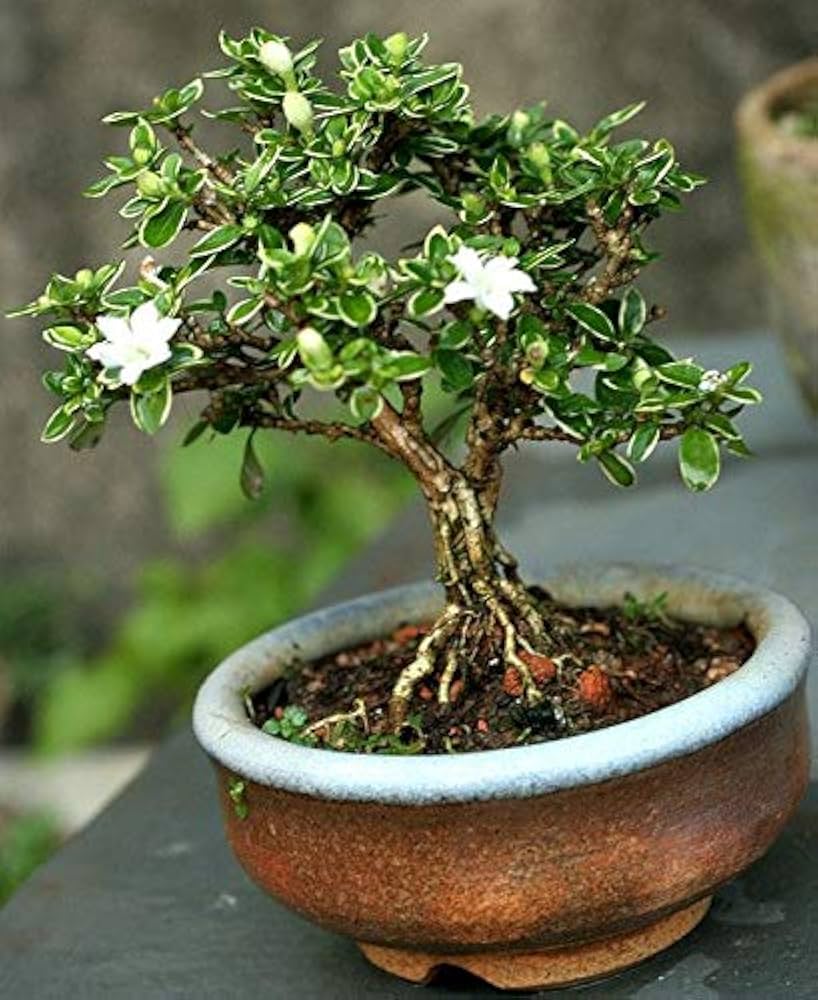
Desert Rose (Adenium obesum)
A popular choice in the Southwest, the desert rose is a small succulent tree native to dry regions of Africa and Asia. Although it can produce striking, rose-like flowers, its swollen trunk and crown are the standout features when trained as bonsai. This unique appearance, especially when the leaves fall in winter, sets the Adenium apart.
The desert rose is less cold hardy than many other bonsai species, so bring it indoors when temperatures dip to about 55°F (it is hardy only in USDA Zones 11 and 12). While indoors, give it plenty of sunlight to encourage flowering. Water the plant every 7 to 10 days, ensuring the soil dries out between waterings. Take care if you have children or pets, as the plant is highly toxic; contact with its sap can cause skin irritation, and ingestion can lead to severe reactions.
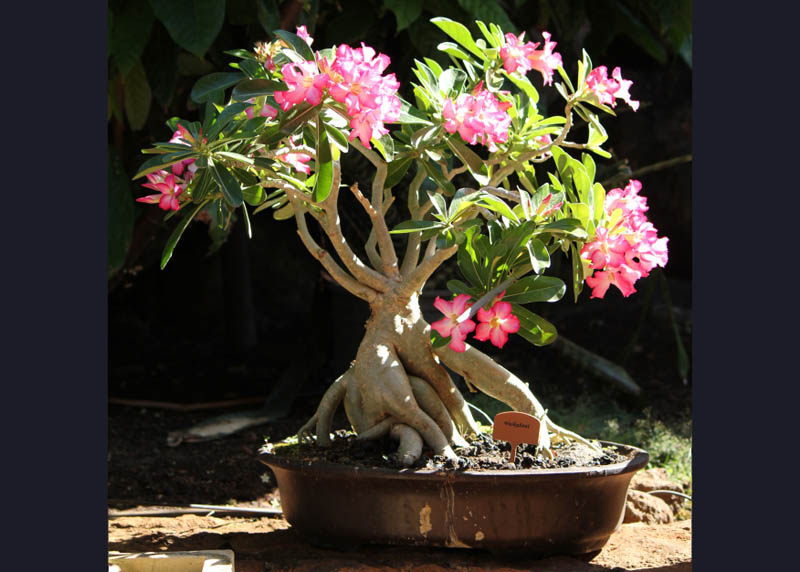
Jade (Crassula ovata or Portulacaria afra)
Crassula ovata, commonly known as jade, is a popular houseplant with nearly 300 varieties of succulent types. Portulacaria afra, or dwarf jade, belongs to the purslane family, though it’s not technically a true jade. Both species are excellent for beginners, as they require minimal watering and thrive indoors. P. afra features smaller, fleshy leaves and is particularly resilient, tolerating some mistakes in care or pruning.
For shaping dwarf jade, avoid using wires and focus on careful pruning. Since these plants grow quickly, regular trimming is necessary to maintain an appealing shape. In Zones 9 to 11, you can grow baby jade outdoors until nighttime temperatures drop to around 40°F. True jade (C. ovata) is less cold hardy, only suitable for Zones 11 and 12, and should be brought indoors when temperatures approach 50°F. Both species share similar care needs but are prone to root rot, so be cautious not to overwater them.
